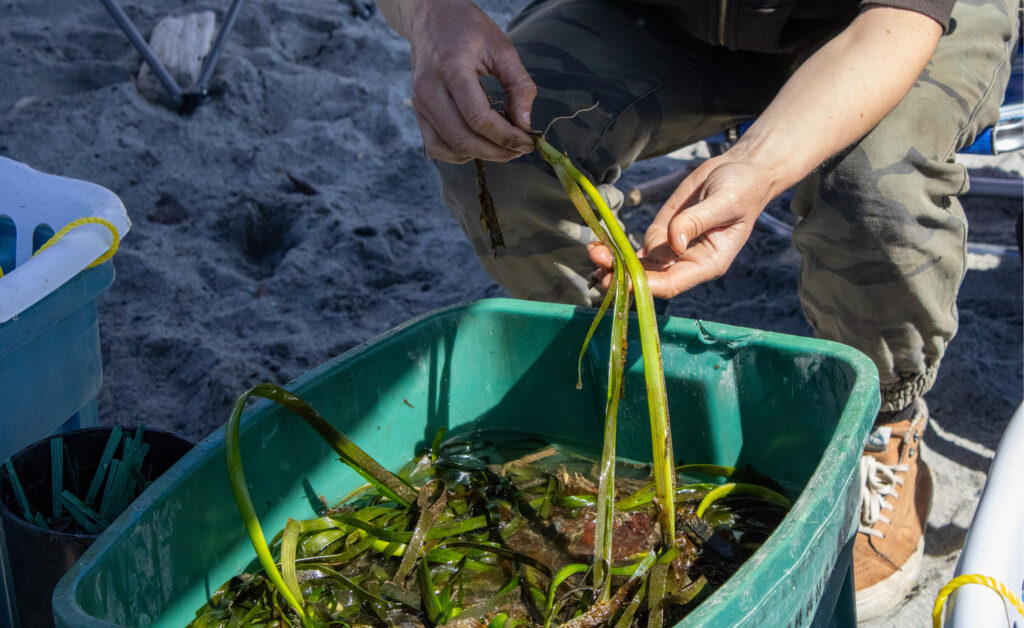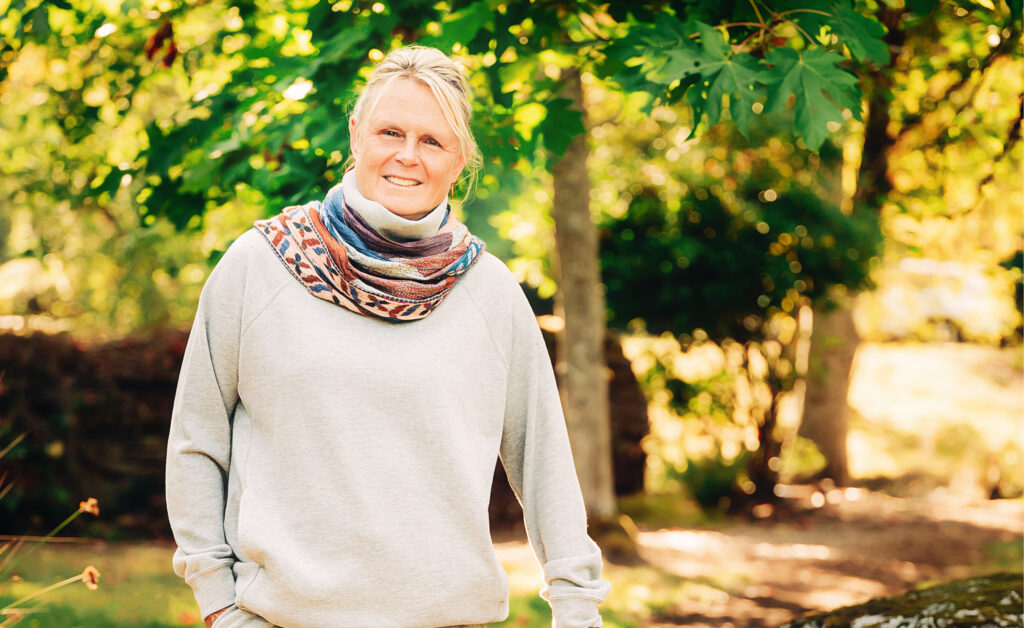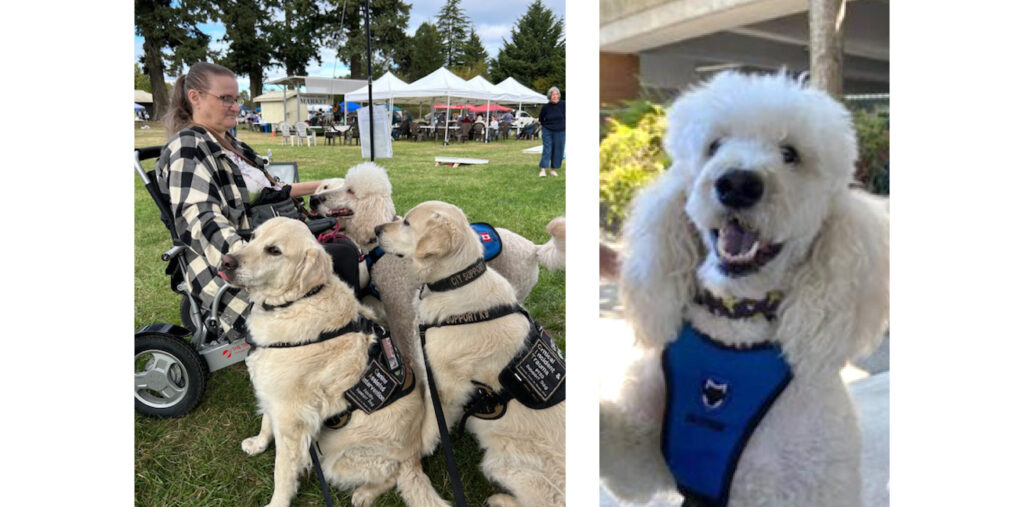by Tina Kelly –
“Conservation Work,” states the sign nestled in the sand at Willows Beach. Behind the sign, 19 people congregate around a collection of buckets, laundry baskets and Rubbermaid bins. The task at hand is prepping 1,000 eelgrass shoots for transplanting nearby. All of this work is organized by Saanich Peninsula-based SeaChange Marine Conservation Society.
It’s impossible to speak about local eelgrass restoration without mentioning SeaChange. Founded in 1998, SeaChange has had a significant positive impact on the health of Salish Sea shorelines and nearshore ecosystems. Eelgrass has always been one of their key issues.
The importance of eelgrass can’t be overstated. It grows in shallow bays and estuaries and, while it’s green and grows in the ocean, it is not an algae but a flowering plant. Eelgrass meadows are critical habitat for a wide diversity of animals. Several commercial and culturally important species, including salmon, require healthy eelgrass habitat for at least a part of their lifecycle. Think of eelgrass meadows as ocean nurseries.
Eelgrass plants filter (some) pollutants, stabilize sediments and provide a physical disruption to waves and currents, slowing down the movement of water and protecting coastlines. We have seagrasses, in part, to thank for the oxygen we breathe. When it comes to the climate crisis, eelgrass has a role to play. These plants can sequester carbon, making them a key player in the fight against climate change.
Seagrass habitats are in trouble. Their populations are declining, locally and globally, and with them the ecosystem functions they provide. Plants can be uprooted by anchors, damaged by excess sediment, and die off when their access to sunlight is blocked by high turbidity, overwater structures or marine debris.
It will take science, advocacy and focused work to conserve eelgrass meadows. SeaChange’s Resilient Estuaries of the Salish Sea project has a clear focus — “identify and restore estuaries that will provide crucial ecological hotspots as the oceans are altered by climate change.”
Volunteers are among those toiling away with the shoots; each shoot is to be attached to a washer that will function to weight it in place. As a non-profit, SeaChange values the contribution volunteers make to their work. And in return, volunteers enjoy meeting like-minded community members and the feeling of having a positive influence on their local environment.
Once all of the shoots are prepped, they’re transported to the transplant site a short boat trip towards the Oak Bay Marina. Using underwater technology, the SeaChange team had mapped the area’s seafloor and identified the spot in need of plantings. This particular location was damaged by a – now removed – derelict sunken boat. The 1,000 shoots, gathered in bundles of 10, will be planted by staff divers. This is one of their smaller projects; past projects have transplanted 8,000 shoots.
A sunny day draws out neighbours and beach lovers and, as with any good conservation work conducted in a public space, SeaChange staff were on-hand to actively engage curious onlookers. An essential task – raising awareness on the importance of what lies beneath the surface just offshore.
Seachange’s vision statement is something we should all hope becomes a reality: “We envision a world where coastal ecosystems are understood and protected, and where human activity and climate change are no longer a threat.” Sounds good, don’t you think?
For updates on SeaChange projects and to learn how to support their work, sign up for their newsletter by email, connect@seachangesociety.com, or follow on social media (@seachangemarine).
Photo courtesy of SeaChange Marine Conservation Society.




